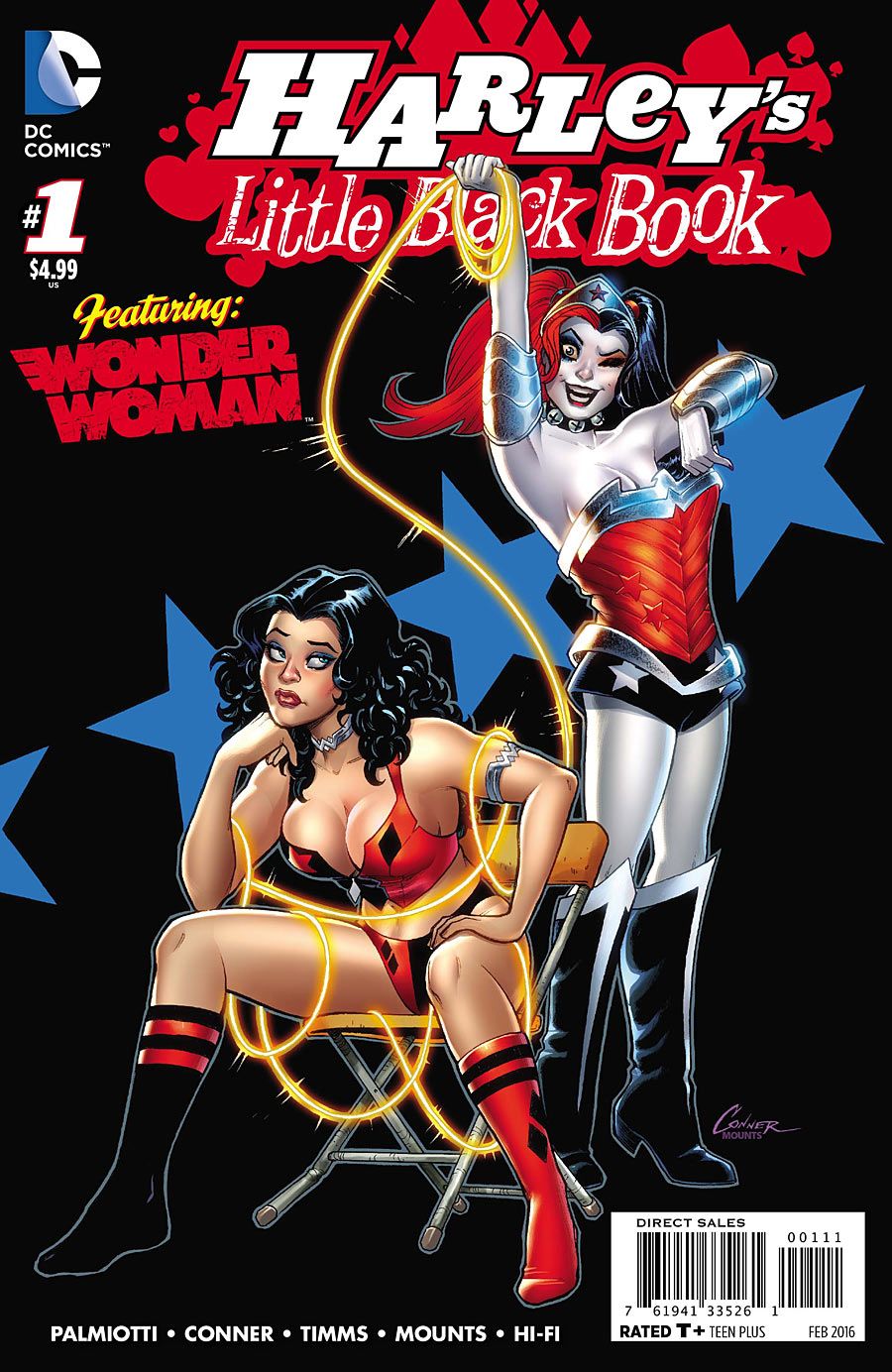Sometimes, doing reviews involves getting the opportunity to dip my toe into a franchise or series I wouldn't normally check out. I've never really danced with Harley Quinn outside of "Batman: The Animated Series," but the character's increased presence in the DC Universe and her elevated profile due to the upcoming "Suicide Squad" movie banged me over the head with a mallet and called out for some attention. So, it was curiosity that got me to pick up "Harley's Little Black Book" #1, the first issue of a new bi-monthly team-up series from Jimmy Palmiotti and Amanda Connor, the seeming caretakers of the character. The book has an odd vibe that -- much like the character -- is at odds with itself, wanting to be simultaneously tantalizing and innocent, a combination with an awkward end result, like watching a teenager try to sexualize a camp song.
The basic premise of the issue is simple enough: Harley has to stop a gang of dummies from an attempt on Wonder Woman's life. In doing so, we find out Harley is a huge fan of the Amazonian and -- in typical Harley fashion -- winds up overdoing the team up, sending the final battle into "Single White Female" territory. I loved this idea but the execution winds up much like the character: kinda sloppy. There isn't really anything here that screams out for this to be an oversized issue. After the opening action sequence, where Harley and her gang discover the London plot, the book slows its pace down to a gentle stroll before ramping up to the big showdown at the climax. The narration slips from present to past tense, which doesn't feel like a choice. I liked Diana's exasperated facepalming through most of her appearance, as the story literally invades her life.
Speaking of appearance, the book looks great, as expected when Connor is pencilling. Her work blends the elements of innocence and action mentioned well, better than the story. Her expressive character work is active, playful and a huge draw. John Timms picks up several pages and, while his work is solid, it's nothing like Connor's. The climactic battle is a prime example of her storytelling abilities, like the pages where the two work in tandem, a fractured mirroring of action on the page. Dave Sharpe does a good job lettering, but -- while I understand the idea behind Harley's captions, which seems torn from lined notebook paper -- the coloring and execution of the boxes were distracting on the page, and it was then I realized this book wasn't for me. It's playful and silly and speaking to different audience.
I think this book may be for much younger fans, perhaps boys in their early teens who are looking to see something risque without risking their browser search history. However, as a protagonist, Harley is unreliable at best, which can make for more insane pairings down the road here.

